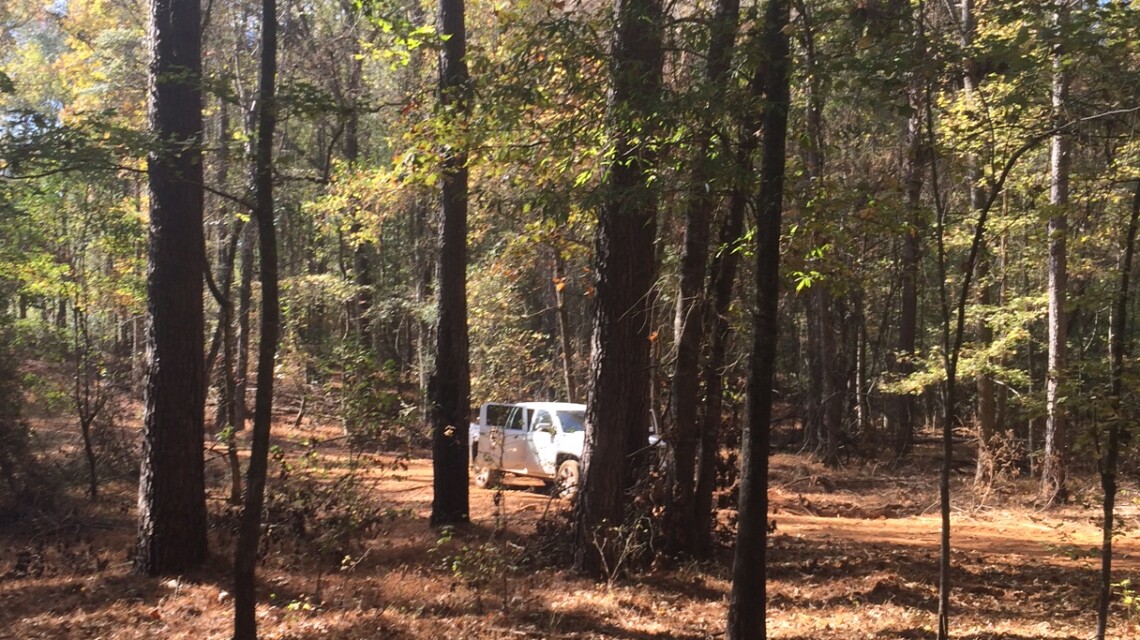Lamstall Conservation Easement
Protecting sensitive areas and high-priority habitats

Upper Oconee River Watershed Little Cedar Creek
This property is protected perpetually by STPAL via a Conservation Easement. Located in the larger Upper Oconee River watershed Little Cedar Creek, a perennial stream, forms a portion of the property’s eastern border for 0.8 miles. The property also has an unnamed creek along a portion of its southern border that flows into Little Cedar Creek at the southeastern corner of the property. There are wide floodplains with mature bottomland hardwoods associated with both of these creeks. There are also two intermittent drains that generally run from west to east and drain into Little Cedar Creek and the unnamed tributary. In total, there are over 1.3 miles of intermittent creeks that feed into Little Cedar Creek. Little Cedar Creek is a major tributary of the Oconee River.
The floodplains and bottomland hardwoods along the two major creeks on the Property are being designated Special Natural Areas. The easement will protect these sensitive areas and high-priority habitats from conversion to agriculture or impervious surface. These buffers go above and beyond the state minimum of 25’ for forestry best management practices.
Wildlife Action Plan (SWAP)
Oak-Hickory-Pine Forest
Considered the climax forest of the Piedmont, this forest type formerly covered 50% to 75% of the region; most examples of fertile soils were eliminated by conversion to agricultural uses. The remaining examples are often found in rocky areas that were difficult to convert to agricultural fields. Typically include a variety of hardwood species such as white oak, black oak, southern red oak, pignut hickory, shagbark hickory, mockernut hickory, red maple, black gum, shortleaf pine, and loblolly pine, with dogwood, rusty viburnum, hog plum, dwarf pawpaw, and various haw bushes in the understory. The American chestnut was formerly a major component of the canopy. Examples over circumneutral soils influenced by mafic or ultramafic bedrock are often floristically richer and may contain species such as Oglethorpe oak, basswood, red mulberry, redbud, and fringe trees. Examples are found on the property on steep slopes between uplands and bottomland.
Mesic Hardwood Forests
Non-wetland forests of floodplains, ravines, and north-facing slopes in the Piedmont. These may include species such as American beech, white oak, northern red oak, bitternut hickory, pignut hickory, shagbark hickory, bigleaf magnolia, yellow poplar, black gum, dogwood, black cherry, and loblolly pine. Typical shrubs include spicebush, sweetshrub, pawpaw, Oconee azalea, rusty viburnum, and pinxter-flower. These hardwood forests are associated with the intermittent drains and transitional areas along creeks on the Property.
Bottomland Hardwood Forests
Forested wetlands of alluvial river floodplains, characterized by a diverse association of deciduous hardwood trees. Canopy dominants vary but may include water oak, willow oak, overcup oak, cherry bark oak, swamp chestnut oak, green ash, sweetgum, bitternut hickory, and pignut hickory. The shrub layer may be dense or relatively sparse, containing a variety of mesophytic or hydrophytic woody plants and often a significant woody vine component. Many of these habitats have been impacted by invasive exotic species such as Chinese privet and Nepalese browntop. These forest types are associated with the floodplains of the creeks on the property.
Streams
In the upper Piedmont, streams are low to moderate gradients and typically contain well-defined riffles and pools. The substrate consists of gravel, pebble, sand, and silt; some bedrock may also be present. Lower Piedmont streams are lower gradient, have fewer riffles and pools, and their substrates have a higher proportion of silt, clay, and detritus than upper Piedmont streams. Turbidity is highly variable, but most of these streams become highly turbid after rain. There are over 2.1 miles of intermittent and perennial unnamed streams on the property that flow into Little Cedar Creek.